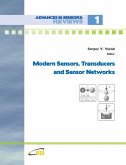INTRODUCTION 1.1 WIRELESS SENSOR NETWORKS A Wireless Sensor Network (WSN) is a network consisting of a large number of tiny nodes called sensors which are organized in an ad hoc manner. A sensor node has fundamental parts namely memory, a transceiver, a processing unit, a sensing unit, and a power supply. The radio transceiver transmits and receives the radio signal from sensor nodes that are under its transmission range and the processing unit is to process the incoming signal and it performs the necessary actions to forward the radio signals. Each sensor has equal sensing capability which senses the environmental conditions such as sound, pressure, and temperature. It is mainly used in military applications such as battlefield surveillance, forest fire detection, industrial process monitoring, and agricultural irrigation management where human risk is high. Wireless sensors are used to acquire data from different environments such as civilian applications, tracking, seismic measurements, and monitoring applications in order to take necessary actions or to prevent disasters.








